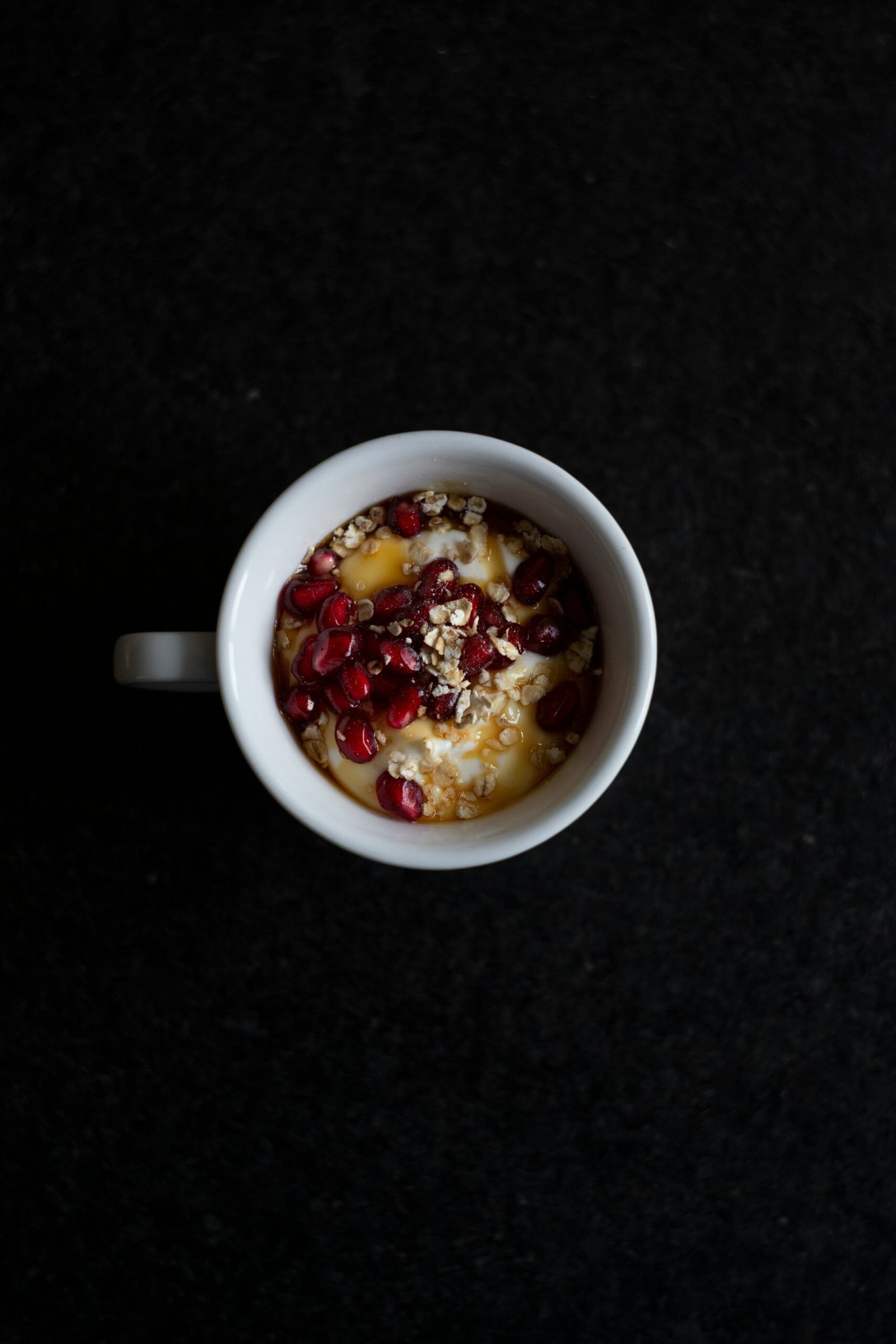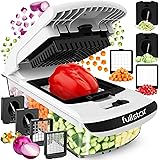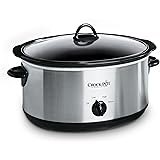Introduction to Oatmeal
Oatmeal, a staple in many households, has a rich history that dates back thousands of years. Originating from the wild red oat, first cultivated in Asia, oatmeal has evolved into a beloved food item worldwide. Its widespread popularity, especially as a breakfast choice, is due to its versatility, ease of preparation, and numerous health benefits. This humble ingredient can be transformed into an array of delicious dishes, making it a favorite in kitchens around the globe.
The appeal of oatmeal lies not only in its flavor but also in its nutritional profile. Oatmeal is renowned for being a wholesome and healthy option, rich in essential nutrients. It is packed with dietary fiber, which aids in digestion, helps regulate blood sugar levels, and reduces cholesterol. Moreover, oatmeal is a good source of vitamins, minerals, and antioxidants, contributing to overall well-being.
One of the remarkable aspects of oatmeal is its various forms, each offering unique textures and flavors. Steel-cut oats are the least processed type, retaining more of the whole grain’s nutrients and offering a hearty, chewy texture. Rolled oats, also known as old-fashioned oats, are steamed and flattened, cooking faster than steel-cut oats while maintaining a chewy consistency. Instant oats, the most processed variety, are pre-cooked and dried, providing a quick and convenient option for those with busy mornings.
Thanks to its adaptability, oatmeal can be enjoyed in myriad ways. Whether served plain or adorned with fruits, nuts, and spices, it can cater to diverse tastes and dietary preferences. From sweet to savory dishes, oatmeal serves as a versatile base for culinary creativity. As a result, it has earned a well-deserved reputation as a nutritious and delicious staple in modern cuisine.
Nutritional Benefits of Oatmeal
Oatmeal is widely recognized for its impressive nutritional profile, making it a popular choice among health-conscious individuals. This whole grain is particularly known for its high fiber content, which plays a crucial role in various aspects of health. One of the standout fibers found in oatmeal is beta-glucan, a type of soluble fiber that has been shown to reduce cholesterol levels. According to a study published in the American Journal of Clinical Nutrition, consuming 3 grams of beta-glucan daily can lower total cholesterol by up to 5%.
In addition to fiber, oatmeal is a rich source of protein, containing about 5 grams per half-cup serving. This protein helps in muscle repair and maintenance, making it a beneficial addition to a balanced diet. Furthermore, oats are packed with essential vitamins and minerals, including B vitamins, iron, magnesium, and zinc. The B vitamins in oatmeal support energy production, while minerals such as iron and magnesium contribute to various bodily functions, including oxygen transport and nerve function.
The health benefits of oatmeal go beyond its nutritional content. Regular consumption of oatmeal has been linked to improved heart health. A pivotal study published in the Journal of Nutrition found that individuals who consumed oatmeal had a 14% lower risk of developing cardiovascular disease. This is largely attributed to its ability to reduce cholesterol and improve arterial health.
Oatmeal also aids in weight management. Its high fiber content promotes a feeling of fullness, which can help control appetite and reduce overall calorie intake. Research in the Annals of Nutrition & Metabolism indicated that individuals who started their day with oatmeal felt fuller for longer compared to those who consumed a traditional breakfast cereal.
Moreover, oatmeal is beneficial for stabilizing blood sugar levels. The slow-digesting carbohydrates and soluble fiber in oatmeal help to prevent sharp spikes in blood sugar, making it an excellent option for individuals with diabetes or those looking to maintain steady energy levels throughout the day.
In summary, the nutritional benefits of oatmeal, including its high fiber and protein content, and vital vitamins and minerals, make it a powerhouse food. Its potential to improve heart health, support weight management, and stabilize blood sugar levels highlight its value in a balanced diet.
Different Types of Oatmeal
Oatmeal is a nutritious and versatile breakfast staple, available in various forms that offer different textures, cooking times, and nutritional benefits. Understanding these differences can help you choose the type that best suits your needs. The main types of oatmeal include steel-cut oats, rolled oats, quick oats, and instant oats. Each type undergoes varying levels of processing, which affects their characteristics and preparation methods.
Steel-Cut Oats
Steel-cut oats are the least processed type of oatmeal, made by chopping whole oat groats into several pieces with steel blades. This results in a coarse texture and a nutty flavor that many people find appealing. Due to their minimal processing, steel-cut oats have a longer cooking time, typically around 20 to 30 minutes. They also retain more of the oat’s natural fiber, making them a highly nutritious option for those seeking sustained energy and digestive benefits.
Rolled Oats
Rolled oats, also known as old-fashioned oats, are made by steaming and flattening whole oat groats with large rollers. This process gives them a softer texture compared to steel-cut oats, while preserving much of their nutritional content. Rolled oats cook quicker, usually in about 5 to 10 minutes, making them a convenient choice for busy mornings. They are also a popular ingredient in baking and for making granola due to their versatile texture.
Quick Oats
Quick oats are similar to rolled oats but undergo additional rolling and steaming to break them down into smaller pieces. This results in an even faster cooking time, often requiring just 1 to 3 minutes. Quick oats have a finer texture and a slightly less chewy consistency, which makes them ideal for those who prefer a smoother oatmeal. However, the additional processing slightly reduces their fiber content compared to steel-cut and rolled oats.
Instant Oats
Instant oats are the most processed form of oatmeal, pre-cooked and then dried during manufacturing. This minimal preparation allows them to cook in as little as one minute when hot water or milk is added. While convenient, instant oats often contain added sugars and flavorings, which can diminish their overall nutritional value. For a healthier option, look for plain instant oats without added ingredients.
Each type of oatmeal offers unique benefits and characteristics. By understanding these differences, you can make an informed choice that fits into your diet and lifestyle preferences. For visual references, consider checking out images or diagrams that illustrate the distinct appearances of each type.
How to Cook Perfect Oatmeal
Cooking the perfect bowl of oatmeal can transform your breakfast routine into a nourishing and enjoyable experience. Whether you prefer the stovetop, microwave, or slow cooker method, each approach has its unique steps and benefits. Here’s a detailed guide to ensure you achieve the ideal consistency and flavor, along with suggestions for optional ingredients and toppings to enhance your oatmeal.
Stovetop Method: For a classic approach, cooking oatmeal on the stovetop is a straightforward method. Begin by combining one cup of rolled oats with two cups of water or milk in a medium saucepan. Add a pinch of salt to enhance the oats’ natural flavor. Bring the mixture to a boil over medium heat, stirring occasionally. Reduce the heat to low and simmer for about 5-7 minutes, or until the oats reach the desired consistency. Stir frequently to prevent sticking and ensure even cooking.
Microwave Method: When you’re pressed for time, the microwave offers a quick and convenient option. In a microwave-safe bowl, combine one cup of rolled oats with two cups of water or milk. Include a pinch of salt to taste. Microwave on high for about 2-3 minutes, pausing to stir halfway through. Keep an eye on the oats to prevent boiling over. Let the oatmeal sit for a minute to thicken before serving.
Slow Cooker Method: For a hands-off approach, the slow cooker can be an excellent choice, especially for busy mornings. Combine one cup of steel-cut oats with four cups of water or milk in the slow cooker. Add a pinch of salt. Set the slow cooker to low and cook for 6-8 hours, or overnight. This method provides a creamy and hearty texture, perfect for waking up to a ready-made breakfast.
To achieve the ideal consistency, adjust the liquid ratio based on your preferences. For creamier oatmeal, use more liquid. For a thicker texture, reduce the amount of liquid slightly. For added flavor, consider incorporating ingredients such as cinnamon, vanilla extract, or a touch of maple syrup during the cooking process.
Toppings can greatly enhance the oatmeal experience. Fresh fruits such as berries, bananas, or apples add natural sweetness and texture. Nuts and seeds like almonds, walnuts, or chia seeds provide a satisfying crunch. For an extra boost of nutrition, consider adding a dollop of Greek yogurt, a spoonful of nut butter, or a sprinkle of hemp seeds. Experimenting with different combinations can keep your oatmeal exciting and nutritious.
Delicious and Healthy Oatmeal Recipes
Oatmeal stands out not only for its impressive health benefits but also for its remarkable versatility in the kitchen. Whether you prefer sweet or savory dishes, there is an oatmeal recipe to satisfy your taste buds. Below, we’ve curated several diverse and delectable oatmeal recipes that demonstrate just how adaptable this nutrient-rich grain can be. Additionally, we encourage you to visit high-traffic recipe blogs for further inspiration.
Classic Sweet Oatmeal
Ingredients:
- 1 cup rolled oats
- 2 cups water or milk
- 1 tablespoon honey or maple syrup
- 1 teaspoon vanilla extract
- Pinch of salt
- Fresh fruit (berries, banana slices, or apple chunks)
- Optional toppings: nuts, seeds, or a dollop of yogurt
Instructions:
- In a medium pot, combine rolled oats, water or milk, and a pinch of salt. Bring to a boil.
- Reduce heat and let it simmer for 5-7 minutes, stirring occasionally until the oats are tender and the mixture reaches your desired thickness.
- Stir in honey/maple syrup and vanilla extract.
- Serve hot, topped with fresh fruit and optional garnishes.
Nutritional Information (Per Serving): Approximately 220 calories, 5g protein, 4g fiber, 6g fat, 38g carbs
Savory Spinach and Feta Oatmeal
Ingredients:
- 1 cup steel-cut oats
- 3 cups vegetable broth
- 1 cup fresh spinach, chopped
- 1/4 cup crumbled feta cheese
- 1 clove garlic, minced
- Salt and pepper to taste
- Optional: a poached or fried egg on top
Instructions:
- In a pot, combine the steel-cut oats and vegetable broth. Bring to a boil.
- Reduce the heat and simmer for 20-30 minutes, stirring occasionally until the oats are cooked.
- Stir in the spinach, garlic, salt, and pepper. Cook for an additional 2-3 minutes until the spinach wilts.
- Remove from heat, and stir in the crumbled feta cheese.
- Serve hot, optionally topped with a poached or fried egg.
Nutritional Information (Per Serving): Approximately 330 calories, 11g protein, 5g fiber, 10g fat, 45g carbs
Overnight Chia Oats
Ingredients:
- 1/2 cup old-fashioned oats
- 1/2 cup unsweetened almond milk (or milk of choice)
- 1 tablespoon chia seeds
- 1 teaspoon honey or agave syrup
- 1/4 teaspoon cinnamon
- Fresh or dried fruit for topping
Instructions:
- In a mason jar or bowl, combined oats, almond milk, chia seeds, honey/agave syrup, and cinnamon.
- Stir well, cover, and refrigerate overnight.
- In the morning, give it a good stir and top with your favorite fruit.
- Enjoy cold or heat in the microwave if you prefer it warm.
Nutritional Information (Per Serving): Approximately 250 calories, 6g protein, 6g fiber, 7g fat, 40g carbs
For additional recipes and inspiration, consider visiting popular recipe blogs such as Minimalist Baker and Cookie and Kate.
Oatmeal in Dietary Plans
Oatmeal is a versatile and nutritious food that can be a valuable component of various dietary plans, catering to diverse nutritional needs and preferences. For those following a vegan diet, oatmeal is an excellent option as it is entirely plant-based. It provides a rich source of dietary fiber, iron, and protein. Vegans can enhance the nutritional profile of their oatmeal by adding ingredients such as almond milk, chia seeds, and fresh fruits.
For individuals adhering to a gluten-free diet, it is essential to ensure that the oatmeal consumed is certified gluten-free. While oats themselves do not contain gluten, cross-contamination during processing can occur. Look for brands that offer specially labeled gluten-free oats to avoid any potential issues. Expert nutritionists often recommend pairing oats with other gluten-free grains like quinoa or millet to increase variety and nutrient intake.
In the context of a ketogenic (keto) diet, traditional oatmeal poses a challenge due to its high carbohydrate content. However, innovative recipes have emerged to provide low-carb alternatives that resemble the texture and components of oatmeal. One popular substitute, known as “keto oatmeal” or “keto porridge,” uses ingredients like almond flour, ground flax seeds, and unsweetened coconut flakes. These alternatives can be tailored to mimic the consistency and warm satisfaction of traditional oatmeal, while keeping carbohydrate counts within the strict limits of the keto diet.
According to several dietitians, incorporating oatmeal into any dietary plan can provide substantial health benefits. Dr. Jane Smith, a registered dietitian, emphasizes that with proper modifications, oatmeal can offer a powerhouse of nutrients while meeting dietary restrictions. Furthermore, the American Heart Association advocates for the consumption of whole grains, like oats, citing their role in maintaining heart health and stabilizing blood sugar levels.
No matter the dietary plan, with thoughtful adjustments, oatmeal can continue to be a wholesome and enjoyable meal choice. These adaptations ensure that everyone can reap the benefits of this nourishing food without compromising their dietary goals.
Oatmeal for Fitness and Weight Management
Incorporating oatmeal into your fitness regimen can yield significant benefits for both energy levels and weight management. Oatmeal is renowned for its slow-digesting carbohydrates, which steadily release energy, providing sustained fuel for workouts and daily activities. This steady energy release helps in preventing the spikes and crashes in blood sugar levels that often occur with high-glycemic-index foods, thereby enhancing performance and endurance.
The high satiety value of oatmeal is another crucial element, particularly for those looking to manage their weight. Due to its high fiber content, notably beta-glucan, oatmeal can help you feel fuller for longer, reducing the likelihood of overeating and snacking between meals. This means fewer unnecessary calories, making it easier to maintain a caloric deficit, which is essential for weight loss.
Fitness experts and nutritionists frequently commend oatmeal for its role in muscle recovery. The complex carbohydrates in oatmeal help replenish glycogen stores that are depleted during intense exercise. Additionally, oatmeal’s abundant protein content aids in muscle repair and growth, making it a highly effective post-workout meal option. Registered dietitian Jane Miller suggests, “A bowl of oatmeal with a serving of fruit and some nuts provides a perfect post-workout balance of carbohydrates and protein, essential for recovery and muscle synthesis.”
For pre-workout meals, consider topping your oatmeal with banana slices and a sprinkle of chia seeds. This combination will deliver a blend of carbohydrates and omega-3 fatty acids, ensuring you have optimal energy levels and promoting overall cardiovascular health. Post-workout, oatmeal with a spoonful of Greek yogurt and a drizzle of honey can help in muscle recovery while providing essential nutrients to kickstart the healing process.
By integrating oatmeal into your fitness and weight management routine, you can harness its numerous benefits, ensuring you stay energized, recover swiftly, and manage your weight effectively.
Frequently Asked Questions About Oatmeal
Oatmeal has long been a beloved breakfast staple, thanks to its nutritional value and versatility. Below, we address some common questions readers might have about oatmeal, simplifying your journey to a healthier lifestyle.
Is Oatmeal Gluten-Free?
Oats are naturally gluten-free; however, cross-contamination can occur if they are processed in facilities that also handle gluten-containing grains like wheat, barley, and rye. For individuals with celiac disease or severe gluten sensitivity, it is crucial to look for oat products labeled as “certified gluten-free.” These products are processed in dedicated facilities and tested to ensure they meet stringent gluten-free standards.
Can Oatmeal Help Lower Cholesterol?
Yes, oatmeal can aid in lowering cholesterol levels. The key lies in its high content of beta-glucan, a type of soluble fiber. Research has shown that beta-glucan can effectively reduce levels of low-density lipoprotein (LDL) cholesterol, often referred to as “bad” cholesterol. According to the American Heart Association, consuming three grams of soluble fiber from oats per day can help decrease total cholesterol levels by approximately 5 to 10 percent.
What are the Best Toppings for Oatmeal?
The possibilities for oatmeal toppings are virtually endless, allowing you to tailor your bowl to your taste preferences and nutritional needs. Popular choices include fresh fruits like berries, banana slices, and apple chunks, which add natural sweetness and a dose of vitamins. Nuts and seeds, such as almonds, walnuts, chia seeds, and flaxseeds, provide a healthy crunch along with beneficial omega-3 fatty acids. For a touch of indulgence, you might consider a drizzle of honey or a sprinkle of cinnamon. For those interested in savory options, consider adding avocado, a poached egg, spinach, or a sprinkling of cheese.
By addressing these frequently asked questions, we hope to provide clarity and inspire you to incorporate oatmeal into your diet in new and enjoyable ways.













